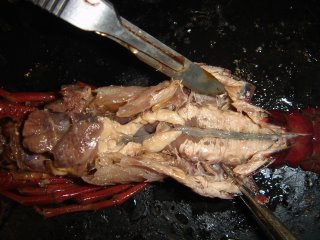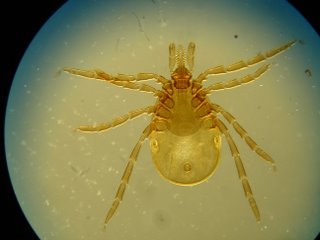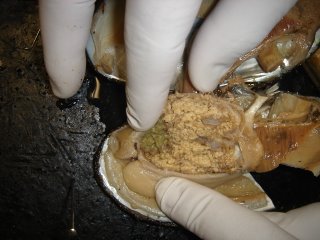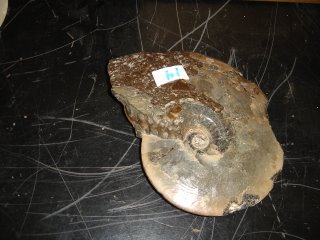Thursday, October 26, 2006
10-26 crayfish dissection- Phylum Arthropoda Subphylum Mandibulata Class Crustacea

Rudder

Carapace

Rostrum

Second swimmeret... can't seem to locate the first swimmeret

Gill cover

Anus and telson

Gills

Telson

Mandibular muscles (stuck on the shell of each side)
also visible are stomach, liver and gonads (bright yellow).

Heart

Gonads

Green Gland (two of them)

Esophagus

uhhh...looks like heart

nerve cord and stuff...
Remember, the crayfish dissection is Phylum Arthropoda, Subphylum Mandibulata, Class Crustacea
Slides from 10-26-06 Phylum Arthropoda

Phthirius pubis - pubic lice
Phylum Arthropoda, Subphylum Mandibulata, Class Insecta

Ixodes scopularis - deer tick
Phylum Arthropoda, Subphylum Chelicerata, Class Arachnida

Cyclops - sub p. mandibulata, class crustacea

Daphnia
sub p. mandibulata, class crustacea

horseshoe crab - larvae stage
Phylum Arthropoda, Subphylum Chelicerata, Class Xiphosura
Saturday, October 21, 2006
lab 1 for exam 2- Mollusca and Annelida

Clam glochida
Phylum Mollusca, Class Pelecypoda

Nereis parapodium
Phylum Annelida, Class Polychaeta

Earthworm Intestinal Region
Phylum Annelida, Class Oligochaetac














Clam/mussel
mantle

Clam/mussel gonad, liver and stuff
Once you orient the clam so that the left shell is on top (the one open), you know that the mouth and foot will be to the left. You can orient based on the umbo (draw line down center through umbu, and short side is "front" which makes the shell you are looking at the left shell). Green is liver. gonads and gills are pretty obvious. Anterior adductor muscle will be to your left. Posterior adductor muscle will be to the right.

Phylum Annelida, Class Polychaeta

Phylum Annelida, Class Polychaeta

Phylum Annelida, Class Polychaeta

Phylum Annelida, Class Hirudinea (leeches)

Phylum Mollusca, Class Amphineura (Chitons- 8 pony plates)

Phylum Annelida, Class Oligochaeta


Phylum Annelida, Class Hirudinea (leeches)

Phylum Mollusca, Class Scaphapoda ("tooth shells"- shells actually look like tusks of an elephant)

Phylum Mollusca, Class Pelecypoda (Bivalves- like clams)

Phylum Mollusca, Class Amphineura (Chitons- 8 pony plates)

Phylum Mollusca, Class Pelecypoda (Bivalves- like clams)

Phylum Mollusca, Class Amphineura (Chitons- 8 pony plates)

Phylum Mollusca
Class Gastropoda (Coils, spirals, like snails- caused by torsion)

Phylum Mollusca
Class Gastopoda



Phylum Mollusca
Class Gastropoda (Coils, spirals, like snails- caused by torsion)

Phylum Mollusca
Class Cephelapoda (squid, nautilus. Have internal shell called a "pen". The coiled shell is of a nautilus which is like a squid but with this shell. Do not get this shell of the nautilus confused with the coiled shells of the Class Gastropoda)

Phylum Mollusca
Class Cephelapoda (squid, nautilus, cuttle fish.)

Phylum Mollusca
Class Cephelapoda (squid, nautilus.)

Phylum Mollusca
Class Cephelapoda (squid, nautilus, cuttle fish.)

Nautilus shell
Phylum Mollusca
Class Cephalapoda (do not get this coiled shell confused with the shells of Class Gastropoda)


